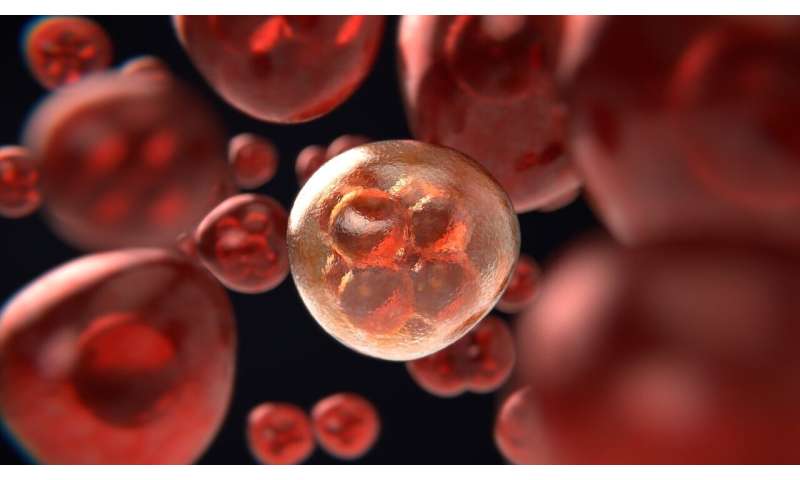
Scientists at City of Hope, working in collaboration with researchers at Translational Genomics Research Institute (TGen) and other colleagues across the country, have found that the actions of circulating immune cells—namely how they differentiate and signal—at the start of immunotherapy treatment for cancer can inform how a patient will respond to the therapy. The team’s findings will publish this week in the Proceedings of the National Academy of Sciences of the United States of America.
“We used an ecological population model to understand the interactions between circulating white blood cell abundance and tumor response to immunotherapy,” explained Andrea Bild, M.D., professor in the Division of Molecular Pharmacology within the Department of Medical Oncology & Therapeutics Research at City of Hope and a senior author on the study.
Immunotherapy has the potential to treat a wide range of cancers, but response varies greatly, with approximately 40% of patients receiving no benefit from the therapies. In an effort to find ways of identifying who is more likely to respond to immunotherapy at the start of treatment, or possibly even before it starts, researchers used a mathematical model developed by Bild and colleagues.
The team used the model to analyze data from the results of patients with advanced colorectal or other gastrointestinal cancers who were enrolled in a clinical trial led by Sunil Sharma, M.D., deputy director of Clinical Services at TGen, an affiliate of City of Hope. The trial involved a chemotherapy regimen followed by a combination of chemotherapy and immunotherapy. It measured the strength of patients’ tumor-immune cell interactions, which was then related to different immune cells categorized by their behavior.
The findings highlight, for the first time, an important predator-prey relationship between circulating immune cell dynamics and a tumor’s response to immunotherapy. In particular, “predator” T cells showed increased differentiation and activity of interferon, a protein that exerts anti-tumor effects, during immunotherapy treatment in patients that respond to treatment, said Bild. This relationship was not found in patients during chemotherapy, nor was it seen in those who were nonresponsive to immunotherapy.
“The study shows that subsets of immune cells in the blood indicate how each cancer patient responded to this combination of chemotherapy and immunotherapy,” said Sharma, who also is director of TGen’s Applied Cancer Research and Drug Discovery Division and one of the study’s senior authors.
The ability to identify such potential biomarkers, or molecules that can be measured to show how well the body is responding to treatment, would enable clinicians to offer more precise treatment plans to patients. City of Hope, with the help of TGen, is working to offer precision medicine to all patients.
“We found, using this combination drug approach, that the body’s own immune response and its activation correlated with a higher response to the therapy among cancer patients,” said Sharma.
According to Bild, next steps include further testing the ability of circulating immune cells to reflect tumor response to therapy in a clinical trial at City of Hope in collaboration with TGen, including Sharma and others.
“We believe there is potential to measure a tumor’s response to specific drugs using circulating immune cell dynamics, which are accessible and collected from a blood draw,” says Bild. A noninvasive test to measure immune-tumor interaction strength would lead to better personalized medicine for cancer patients, with the potential to improve overall outcomes.
Source: Read Full Article